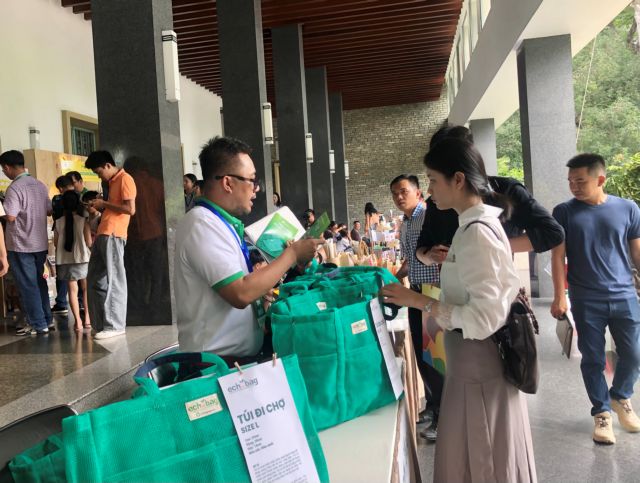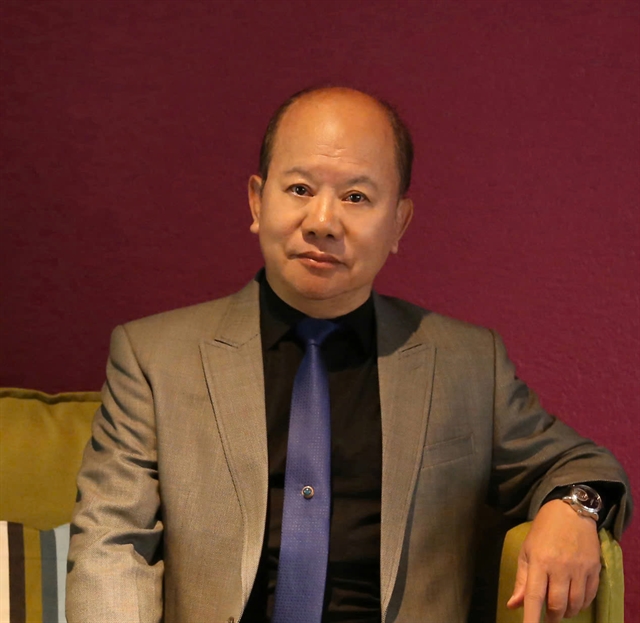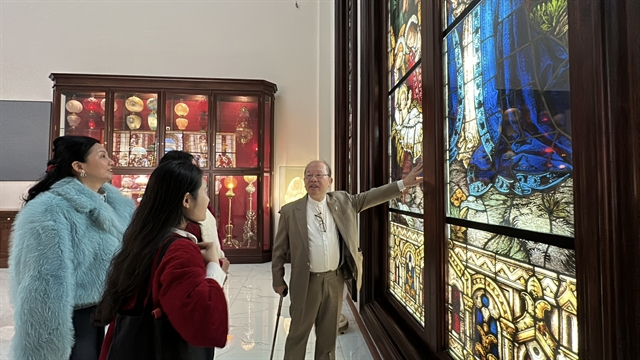 Inner Sanctum
Inner Sanctum

Nguyễn Xuân Thắng, chairman of the Vietnam Federation of UNESCO Associations (VFUA), will officially open soon a unique art glass museum in Hà Nội's outskirts district of Ba Vì, showcasing more than 1,500 glass objects from his own collection. Việt Nam News reporter Lê Hương speaks with Thắng about his passion for collecting art glass and his decision to donate his collection to the public after his passing.
 |
| Nguyễn Xuân Thắng, chairman of the Vietnam Federation of UNESCO Associations and owner of the Art Glass Museum. Photo courtesy of Thắng |
Inner Sanctum: Why do you want to open your collection of art glass to the public?
Once a collection reaches a certain scale, it’s important to consider how to make meaningful use of it. After years of collecting and working with the UN cultural agency UNESCO, I realised that cultural value is not created by an individual alone—it is shaped by many hands and ultimately belongs to the community. So when my collection grew large enough, I began to feel that it should serve a broader public purpose.
Inner Sanctum: How did your passion for collecting begin, and why did you choose art glass?
I’ve been collecting things since I was young. I’m not sure why, but I’ve always believed that anything beautiful made by human hands should be treated with care. I started with matchboxes, cigarette packs, special lighters, postal stamps, and photo albums. Eventually, I shifted to more valuable and systematic items—and developed a deep appreciation for glass.
While I was in Europe, I became fascinated by stained glass lamps. Later, when I had better access and resources through the internet, I began collecting art glass intentionally and systematically. Most of the pieces have been collected over the past 40 years, with the majority acquired in the last 25. Despite my government and professional responsibilities, I devoted much of my spare time to collecting, especially through auctions. Today, the collection includes nearly 2,000 pieces—about three-quarters of which are made of glass.
Art glass holds a unique charm. Its beauty directly affects human perception. It also carries what I consider “positive energy”—the way it interacts with light creates a powerful visual impact.
Development of glass art in Việt Nam is still modest. Although the history of glass stretches back over 5,500 years, it only entered Asia—and particularly Việt Nam—in the last century or two. My hope is that this collection will help inspire local artists and craftsmen to explore and develop their own glass art traditions.
Inner Sanctum: Are there any particularly memorable items in your collection?
Every item has a story, because each one was difficult to find, win at auction, and bring back to Việt Nam. There was always excitement and a bit of worry—especially with the more fragile pieces like Tiffany lamps. Acquiring them meant hiring top artisans and seeking out some of the world’s best craftsmen to ensure the items were not only beautiful but museum quality.
 |
| The museum is located in a peaceful area on the outskirts of Hà Nội. The owner Thắng intends to donate the museum to the public after his passing. Photo courtesy of Thắng |
Many Tiffany style stained glass lamps on the market today are not originals. To achieve a comparable level of artistry—or to obtain something even more special—I had to commission custom work. There are only five to seven craftsmen in the world capable of that level of craftsmanship. Some pieces took up to two years to complete, involving long exchanges and careful planning to transport them safely to Việt Nam.
One of the most prized items is a Tiffany lamp with stained glass shade depicting an autumn landscape, which took four years to complete with American artisans. Another, called "Summer Memory", also took nearly four years. I also have two stained glass pieces by Mayer of Munich, originally made for a church in New York in the 19th century. Bringing those pieces to Việt Nam was an arduous journey with a long backstory.
A particularly meaningful piece is a stained glass version of Raphael’s School of Athens, created by young Vietnamese artists. It’s the only stained glass rendition of this iconic Renaissance painting in the world. It was a very detailed and thoughtful project, requiring a team of highly skilled artisans trained abroad. The work is respected by international peers.
Inner Sanctum: Why did you choose to donate the museum to the VFUA?
Art achieves its full value when it’s shared. Keeping such an intricate and meaningful collection to myself or within my family would limit its impact. I decided to donate my entire Da Vinci farm (on which the museum is located) and a large part of my assets to the general public, under the VFUA’s management.
The aim is to help raise cultural awareness and aesthetic appreciation among the Vietnamese public. This donation also contributes to the development of a fund for cultural projects and supports the non-governmental activities of UNESCO in Việt Nam.
Inner Sanctum: The collection is clearly valuable. How do you handle security at the museum at present?
Fortunately, the museum is located in a peaceful and secure area on the outskirts of Hà Nội. The local community is cultured and harmonious, and we’ve not encountered issues like theft or disturbance.
That said, we will still implement formal security measures. Although the museum hasn’t officially opened yet, there will be a professional security team in place when it does, equipped with the proper tools, fire safety systems, and trained staff—aligned with international museum standards.
Inner Sanctum: What are the challenges in preserving glass?
Art glass is beautiful and delicate, but also incredibly durable compared to other materials such as wood, textiles, or even metals. The main concern is avoiding moisture and mould. As long as it’s kept in a dry environment and displayed in protective glass cabinets, it can last for centuries. VNS
 |
| Nguyễn Xuân Thắng introduces a stained glass painting he got from a church in New York to some visitors at a media viewing. VNS Photo Lê Hương |




